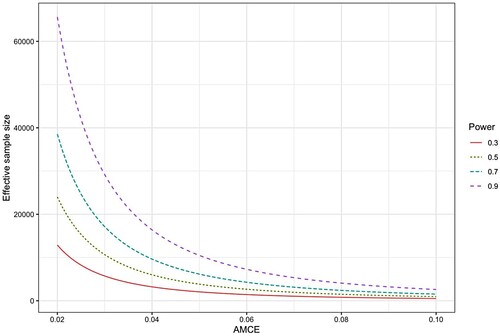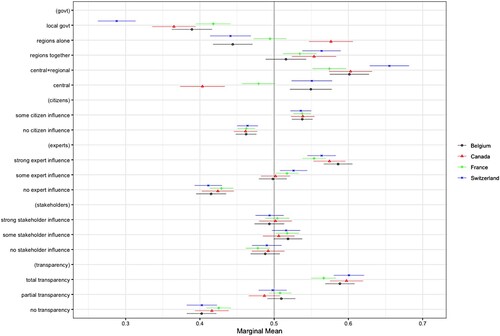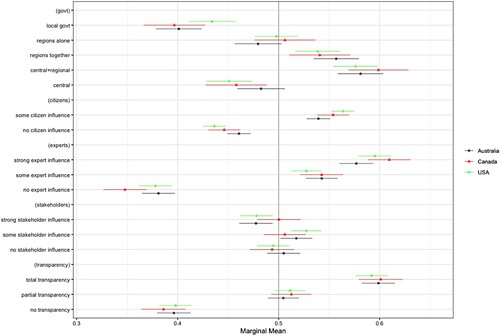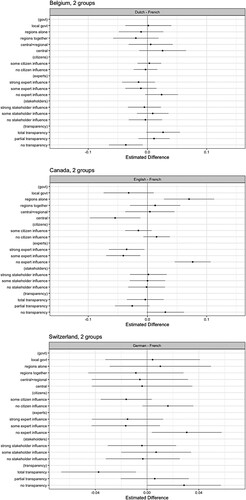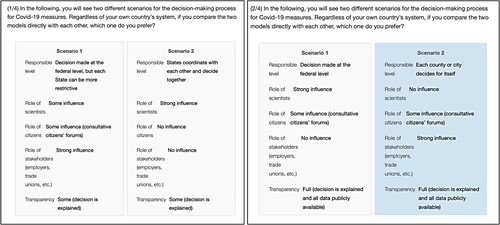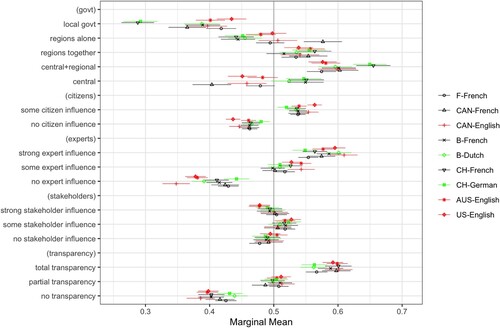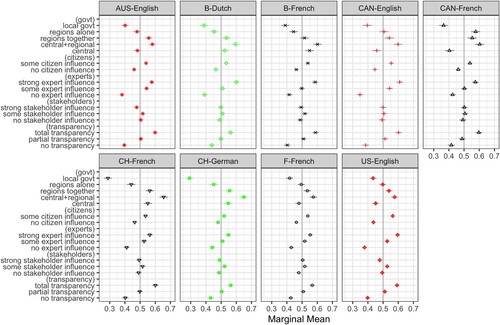Figures & data
Table 1. Dimensions and characteristics of the conjoint analysis.
Table 2. Sample size(s) and distribution of languages by country.
Figure 3. Differences between French speakers by country. Reading example: Belgian francophones are more favourably inclined towards centralization than the French.
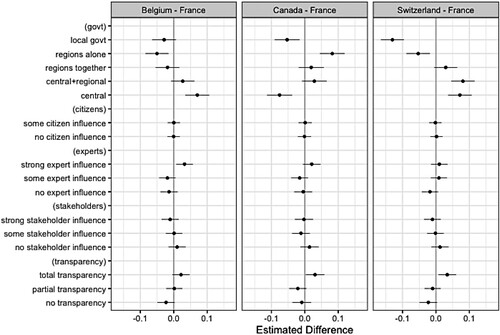
Figure 4. Differences between English and French speakers by residence in Canada. Note: ‘anglo-RoC’ = English speakers living in rest of Canada; ‘anglo-quebecois’ = English speakers living in Quebec; ‘franco-quebecois’ = French speakers living in Quebec; ‘franco-RoC’ = French speakers living in rest of Canada.
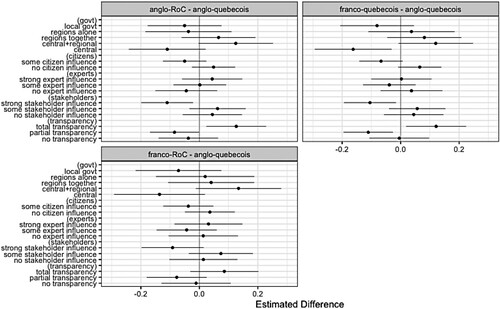
Table 3. ANOVA test results for between-group differences.
Table A1. Sample composition, in % of group and category.
Table A2. Personal COVID-19 unaffectedness by type and group, in % of respondents per group.
Table A3. Power analyses.
Figure A4. Conditional marginal means for all nine language-country groups, matching respondents only.
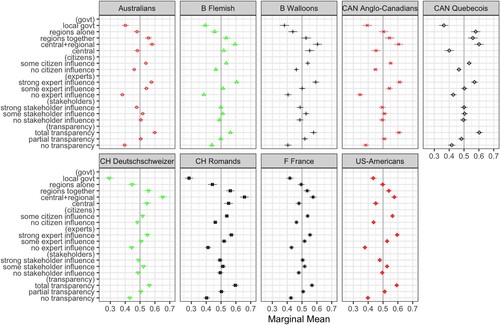
Figure A5. Conditional marginal means for all nine language-country groups, passed attention check only.
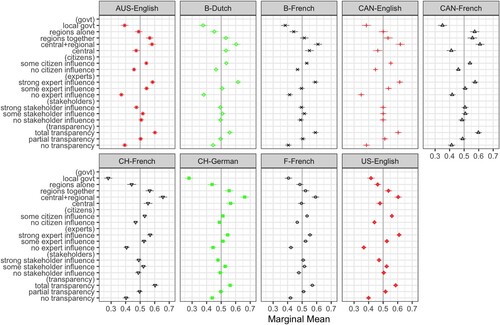
Figure A6. Minimum required effective sample sizes. Note: shown are the required effective sample sizes ( = N individuals * N scenarios * N iterations) for a conjoint experiment with a maximum of five levels ( = the responsible government, in our case) to detect effect sizes AMCE > 0.02 and < 0.1 by the different levels of statistical power for our sub-samples (cf. ) at significance level 0.05. Graph made using the cjpowR package developed by Schuessler and Freitag (Citation2020).
